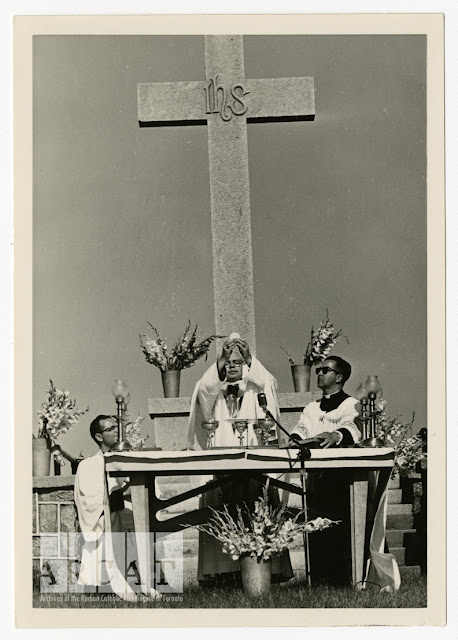In honour of this milestone, we thought it would make a lot of cents (!) to feature ten records with reference to "100":
 |
| Archbishop Lynch fonds, LRC69.23 Offering of 100 lire on the occasion of the golden jubilee of Pope Leo XIII's priestly ordination (24 December 1886) |
 |
| Archbishop Neil McNeil fonds, MNAH16.104 "June 17, 1927...Enclosed find receipt for 100 Special Permits (Minister of the Gospel)." The Liquor Control Board of Ontario (LCBO) was created in 1927 with the end of prohibition, which had been introduced in the province in 1916. However, temperance was still encouraged and from 1927 to 1962, the LCBO required people who wanted to purchase liquor to possess a permit. This letter to the LCBO suggests that priests were issued special permits for mass wine. |
 |
| Bishop de Charbonnel fonds, CAC02.09 September 15, 1853 - An Indenture made between the Roman Catholic Episcopal Corporation and John Butler, yeoman, for a transfer of land in the Township of Dereham, County of Oxford in consideration of one hundred pounds of lawful money. The 1850s was a decade of wrangling over whether to adopt a sterling monetary system or a decimal monetary system based on the US dollar. In 1853, the sterling coinage was made legal tender, and all other silver coins were demonetized. Therefore, one hundred pounds of lawful money refers to the British pound. The first Canadian coinage was not authorized and executed until 1858. This land in the county of Oxford became part of the Diocese of London, which was erected in 1856. |

















